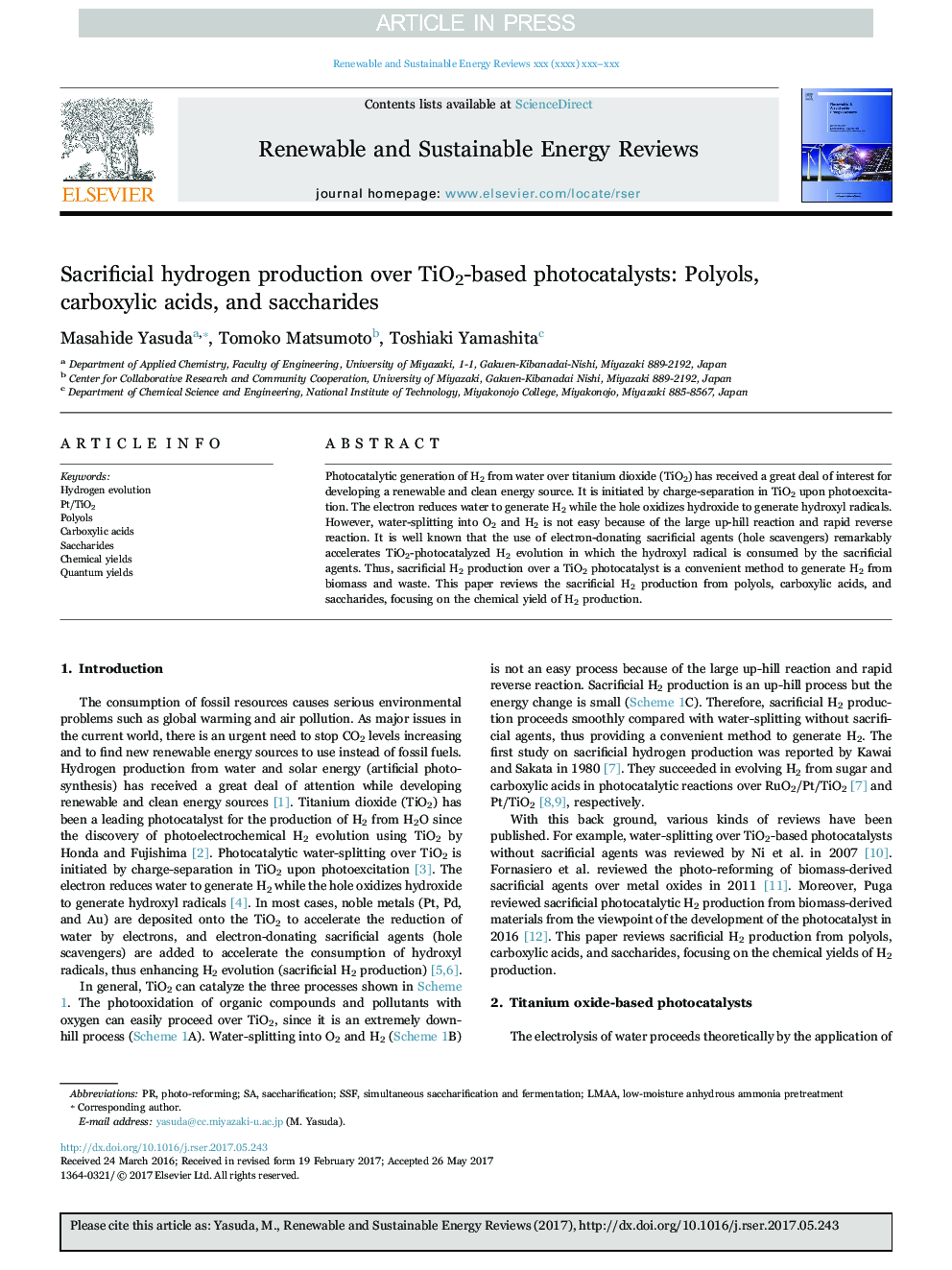| Article ID | Journal | Published Year | Pages | File Type |
|---|---|---|---|---|
| 8112108 | Renewable and Sustainable Energy Reviews | 2018 | 9 Pages |
Abstract
Photocatalytic generation of H2 from water over titanium dioxide (TiO2) has received a great deal of interest for developing a renewable and clean energy source. It is initiated by charge-separation in TiO2 upon photoexcitation. The electron reduces water to generate H2 while the hole oxidizes hydroxide to generate hydroxyl radicals. However, water-splitting into O2 and H2 is not easy because of the large up-hill reaction and rapid reverse reaction. It is well known that the use of electron-donating sacrificial agents (hole scavengers) remarkably accelerates TiO2-photocatalyzed H2 evolution in which the hydroxyl radical is consumed by the sacrificial agents. Thus, sacrificial H2 production over a TiO2 photocatalyst is a convenient method to generate H2 from biomass and waste. This paper reviews the sacrificial H2 production from polyols, carboxylic acids, and saccharides, focusing on the chemical yield of H2 production.
Keywords
Related Topics
Physical Sciences and Engineering
Energy
Renewable Energy, Sustainability and the Environment
Authors
Masahide Yasuda, Tomoko Matsumoto, Toshiaki Yamashita,
